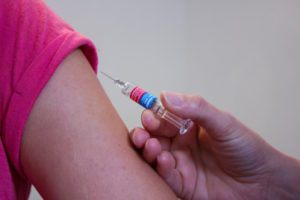Operation Vaccination
Did you know that August is National Immunization Awareness Month (NIAM)? Per the Centers for Disease Control and Prevention, “NIAM was established to encourage people of all ages to make sure they are up to date on the vaccines recommended for them.” While the CDC uses this month to raise awareness about the important role that vaccines play in preventing serious, and sometimes deadly diseases, it is also a great time for coders to review the Current Procedural Terminology (CPT) and make sure they are applying them correctly.
There are several things to consider when coding for vaccinations including whether or not counseling was provided, how many components are administered, the age of the patient, and the route of administration. For patients under the age of 18, CPT code 90460 covers the first component administered via any route with counseling by a physician or other qualified health professional. Code 90461 covers each additional vaccine or component. Parents or guardians of patients in this age range typically have questions about the recommended vaccinations, thus the specific code. However, the documentation for that date of service must include the vaccine administered, patient risk factors or concerns discussed, plus any information shared with the patient and/or family. An example would be administration of a DTaP vaccine to a six-year-old patient when counseling is provided to the parent/guardian about possible side effects or other concerns. This single injection consists of diphtheria, tetanus and pertussis components and should be coded as 90460 and 90461×2 to cover all three components and the counseling.
 For patients over the age of 18 who do not require the detailed counseling, CPT code 90471 captures the first component administered via any type of injection (percutaneous, intradermal, subcutaneous or intramuscular) nasal sprayand 90472 should be used for each additional injected component. Codes 90473 (first component) and 90474 (each additional component) are used for reporting only intranasal or orally administered vaccines. All of these codes can by combined to report any number of vaccines or components administered via any route. A provider can also report counseling related codes and non-counseling codes for the same encounter if the situation supports it. An example would be if a patient under the age of 18 presented for a meningitis vaccine and influenza vaccine at the same time. If counseling was provided for the meningitis vaccine, code 90460 would be correct. Since no counseling was necessary for the influenza vaccine, 90472 (second component, no counseling) should be reported.
For patients over the age of 18 who do not require the detailed counseling, CPT code 90471 captures the first component administered via any type of injection (percutaneous, intradermal, subcutaneous or intramuscular) nasal sprayand 90472 should be used for each additional injected component. Codes 90473 (first component) and 90474 (each additional component) are used for reporting only intranasal or orally administered vaccines. All of these codes can by combined to report any number of vaccines or components administered via any route. A provider can also report counseling related codes and non-counseling codes for the same encounter if the situation supports it. An example would be if a patient under the age of 18 presented for a meningitis vaccine and influenza vaccine at the same time. If counseling was provided for the meningitis vaccine, code 90460 would be correct. Since no counseling was necessary for the influenza vaccine, 90472 (second component, no counseling) should be reported.
Providers should also include charges and procedure codes for the vaccine supply plus the ICD-10-CM code of Z23 – encounter for immunization. Coding for immunizations can be tricky; I hope this overview will help you master the task.
Happy coding!







